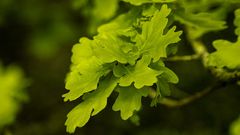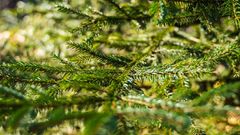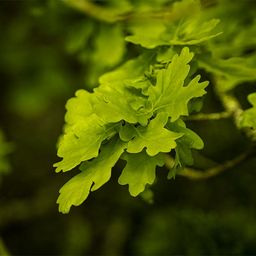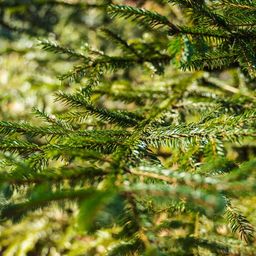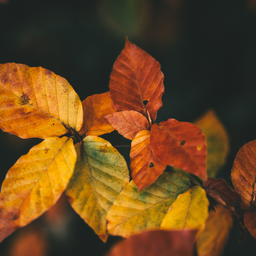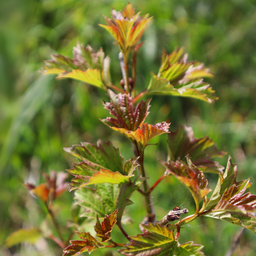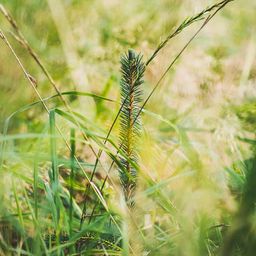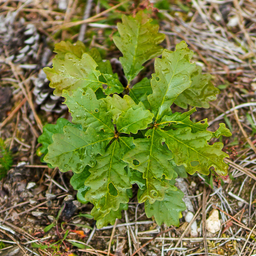Jun 7, 2022
What is agroforestry and why is it good for the environment?
Explore why combining trees, agricultural crops and animals on the same land is good for the environment and part of a sustainable approach to forestry.

Agroforestry is becoming more and more common as foresters, farmers and landowners begin to take advantage of its many benefits. In this post, we look at what agroforestry is, the different types of agroforestry, and why it has such a positive effect on the environment.
What is agroforestry?
Essentially, agroforestry is where trees and shrubs share the same land as agricultural crops and farming systems. There are a number of approaches to agroforestry and done correctly, it can be a positive force in the fight against climate change and play a role in biodiversity conservation.
Interest in agroforestry has increased as more people see it as an important way of meeting our planet's environmental challenges. But agroforestry is not a new phenomenon. It has a long history around the world and was used long before the large-scale approach to agriculture we typically see today.
That said, more work needs to be done to raise awareness and increase the amount of agroforestry taking place. According to Woodland Trust, 72% of UK land is farmed, but of that area only 3% involves agroforestry. This shows how important it is to spread the word about its many benefits.
How to define agroforestry
So what counts as agroforestry? There are typically four criteria: intentional, intensive, interactive and integrated.
- Intentional: The way a piece of land’s trees, animals and plants interact must be planned and nurtured as a complete cycle or system.
- Intensive: The forestry work must be carried out with a level of high intensity that is optimised for productivity.
- Interactive: The system must be productive while also benefiting the environment, including local ecosystems and biodiversity.
- Integrated: The land’s trees, crops and animals must integrate to form a whole, so that its production levels and ecology reach their potential.
Different types of agroforestry
There is no one way of approaching agroforestry. In fact, there are several types or methods that foresters and farmers use.
Alley farming
Alley farming is where agricultural crops are planted between rows of trees. It’s a method often used to produce fruit, vegetables, flowers and even bioenergy.
Silvopasture
Silvopasture is where trees are purposely planted and spaced out in pastures where livestock graze. The trees produce fruit and nuts, while at the same time providing shelter, shade and protection for the animals.
Windbreaks
A windbreak is where a line of trees and shrubs are planted to protect crops, animals, buildings and soil from bad weather. Windbreaks are known to enhance crop production, improve water conservation and support local animal and plant life.
Riparian buffer strip
A riparian buffer strip is a natural or planted area of forest that borders a river or other watercourse. Trees, shrubs and other plants filter water, protect the land from erosion, and prevent nutrients or fertilisers dispersing and getting into the watercourse. Managed effectively, riparian buffer strips support biodiversity and provide a source of income.
Forest farming
Forest farming is where specialty crops are grown beneath the forest canopy, which protects them from the element. Those crops get turned into food and herbs and provide a source of income until the trees grow and can be harvested and sold as wood products themselves.
Forest gardening
A forest garden features plants of different ages and sizes that are chosen to recreate a natural forest environment. They include trees, shrubs and perennial plants to create a sustainable ecosystem that is easy to manage and able to cope with changes in climate.
Why the world needs agroforestry
So why is agroforestry important? We need to start by looking at how food production has changed over time. The world's population has more than doubled in the last 50 years, which means we’ve had to produce more food at cheaper prices. For that to happen, large areas of land, including previously untouched forests, have been repurposed for agriculture.
Inevitably, this has reduced the world’s forests and other natural areas, but it has also led to an increased use of chemicals. In the last 50 years, we have used five times as much fertiliser, which has affected the richness of nutrients and led to water pollution, greenhouse gas emissions and reduced biodiversity.
The benefits of agroforestry
Trees, shrubs, hedges and other plant life has always coexisted happily with agricultural land. But traditional methods of agroforestry are now joined my a range of innovations that should see it become a vital part of the world’s farming systems going forward.
Agroforestry is good for the environment because it can:
- increase biodiversity and wildlife
- capture carbon dioxide
- reduce erosion and improve soil health
- provide wind protection and shade
- improve water quality
- prevent water from becoming overly enriched with nutrients
- provide better protection for microclimates
Agroforestry also brings economic benefits as new, more modern approaches to farming provide greater yields and higher profits. For people in poorer countries, agroforestry can provide better access to food and other important resources.
Perhaps more than anything, agroforestry methods show that there is an alternative to traditional methods. For example, many of the world’s forests have become monocultures where only one or a small number of species grow, which is bad for biodiversity. And of course, when trees are permanently cut to make way for crops, vital carbon sinks disappear too.
Challenges facing agroforestry
Agroforestry is proven to work on multiple levels, but there are challenges to overcome before it becomes a more widespread practice.
We need clear regulations for a start, as well as much greater education about how it works and how to get started. We need to work with foresters and farmers to make sure they understand just how much agroforestry could benefit both the planet and their own businesses.
As with much else when it comes to nature, agroforestry also takes time. For trees, plants, animals to come together and form productive ecosystems, we all need to be patient. But all evidence shows that the wait will be worth it. Again, the more information and data available to prove the benefits the better.
Support sustainable forestry
Here at EcoTree we believe in sustainable forestry.
Our unique model makes it easy for you to own trees in our forests. Buying our trees helps us preserve and protect the forests, including the biodiverse animals and plants that live there. Your tree is a carbon sink too, which means you’re working with us to fight climate change.
Ready to learn more? Check out our unique approach to forestry or visit the treeShop to start your journey as a tree owner.
